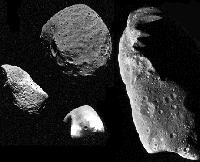Earth is threatened due to being hit by a wave of bad weather in space this Tuesday, after a huge explosion of the Sun. Thus the warning issued by scientists.Sun explosion that happened last week was recorded by several satellites, including the latest satellite of the U.S. space agency, NASA, the Solar Dynamics Observatory (SDO), who observed shock waves on the surface of the Sun.
Explosion leads to Earth and potentially send ‘tsunami Sun’ which crossed the sky over 93 million miles.Site of New Scientist reports, satellite images generated SDO showed flare shock waves from the Sun into space.Experts say, the wave will reach Earth superkilat gas this Tuesday – which will hit the shield that protects the Earth’s magnetic field.This event is expected to trigger the appearance of spectacular aurora, or northern and southern lights on Earth.Scientists have warned previously, that the sun blasts a huge big potential to damage satellites and power, and means of communication on Earth.NASA recently warned that the UK could suffer due to power outages and damage communications system for a long time, after the storm hit the Earth the Sun.
http://www.youtube.com/v/mvdRMgmUR7c&rel=0&fs=1
Meanwhile, the Daily Telegraph page spread predictions of a senior space expert who believes the Earth will be hit by a storm of energy that startling sun, after sun up from the ‘long sleep’ some time in the year 2013.Dr Lucie Green of the Mullard Space Science Laboratory, Surrey, continue to observe increased activity of the Sun through a telescope Japan, Hinode.”Fireworks are produced by the Sun was incredible,” he said, such as pages loaded Telegraph, Monday, August 2, 2010.”This is a rare phenomenon, the explosion was not only one, two nearly simultaneous explosions occurred in different locations, and will be launched toward the Earth.
He explained, this eruption occurred when a large magnetic structures in the Sun’s atmosphere and the loss of stability can no longer pressed by the gravity of the Sun.”The first eruption seen so large that changing the magnetic field at half the Sun’s atmosphere and conditioning for the second explosion.”The explosion led to the Earth’s potential, but may run at different speeds.””This means we have an excellent opportunity to observe the effects, both main effects and prolonged impact.” However, there has been no explanation from a spokesman for NASA.
———
As NewScientist page is loaded, the Sun’s magnetic explosions will form a cloud complex which sends electrical particles to Earth.When it hit the early Earth, can occur anytime, even now, it would trigger auroras at the poles.At worst, this could be a threat to satellites – though probably not the worst.Earth is threatened due to being hit by a wave of bad weather in space this Tuesday, after a huge explosion of the Sun. Thus the warning issued by scientists.
Sun explosion that happened last week was recorded by several satellites, including the latest satellite of the U.S. space agency, NASA, the Solar Dynamics Observatory (SDO), who observed shock waves on the surface of the Sun.Explosion leads to Earth and potentially send ‘tsunami Sun’ which crossed the sky over 93 million miles.Site of New Scientist reports, satellite images generated SDO showed flare shock waves from the Sun into space.
Experts say, the wave will reach Earth superkilat gas this Tuesday – which will hit the shield that protects the Earth’s magnetic field.This event is expected to trigger the appearance of spectacular aurora, or northern and southern lights on Earth.Scientists have warned previously, that the sun blasts a huge big potential to damage satellites and power, and means of communication on Earth.NASA recently warned that the UK could suffer due to power outages and damage communications system for a long time, after the storm hit the Earth the Sun.
Meanwhile, the Daily Telegraph page spread predictions of a senior space expert who believes the Earth will be hit by a storm of energy that startling sun, after sun up from the ‘long sleep’ some time in the year 2013.Dr Lucie Green of the Mullard Space Science Laboratory, Surrey, continue to observe increased activity of the Sun through a telescope Japan, Hinode.
“Fireworks are produced by the Sun was incredible,” he said, such as pages loaded Telegraph, Monday, August 2, 2010.”This is a rare phenomenon, the explosion was not only one, two nearly simultaneous explosions occurred in different locations, and will be launched toward the Earth.He explained, this eruption occurred when a large magnetic structures in the Sun’s atmosphere and the loss of stability can no longer pressed by the gravity of the Sun.”The first eruption seen so large that changing the magnetic field at half the Sun’s atmosphere and conditioning for the second explosion.”The explosion led to the Earth’s potential, but may run at different speeds.””This means we have an excellent opportunity to observe the
——-
As NewScientist page is loaded, the Sun’s magnetic explosions will form a cloud complex which sends electrical particles to Earth.When it hit the early Earth, can occur anytime, even now, it would trigger auroras at the poles.At worst, this could be a threat to satellites – though probably not the worst.















